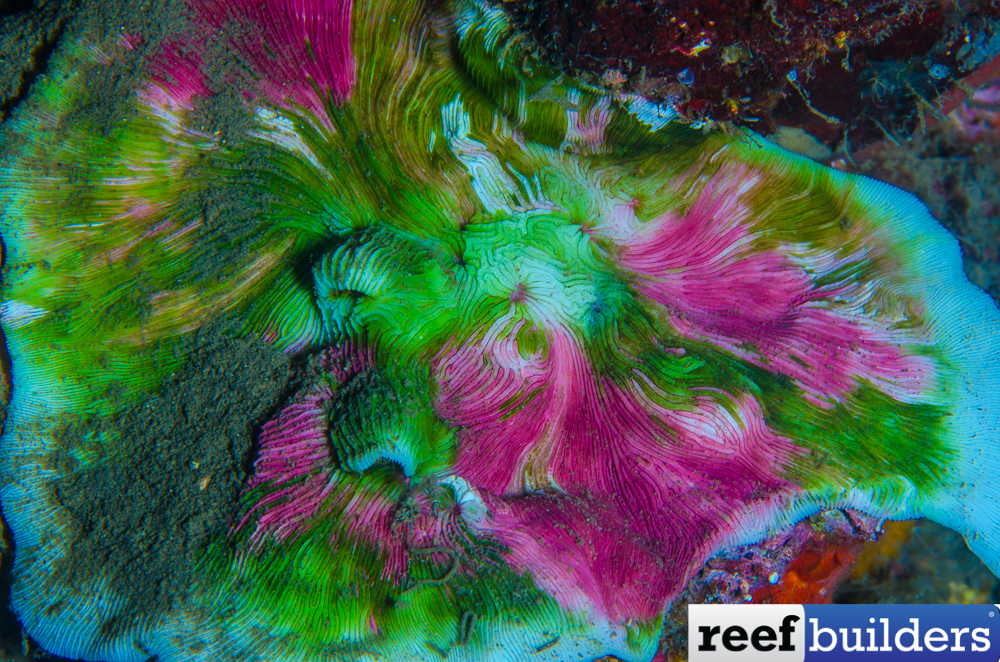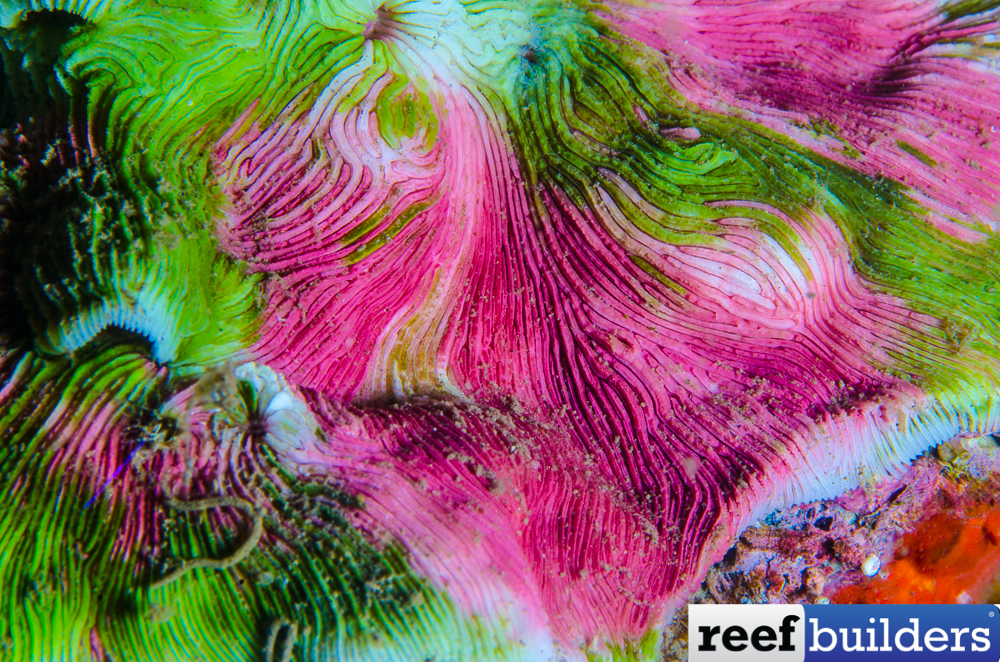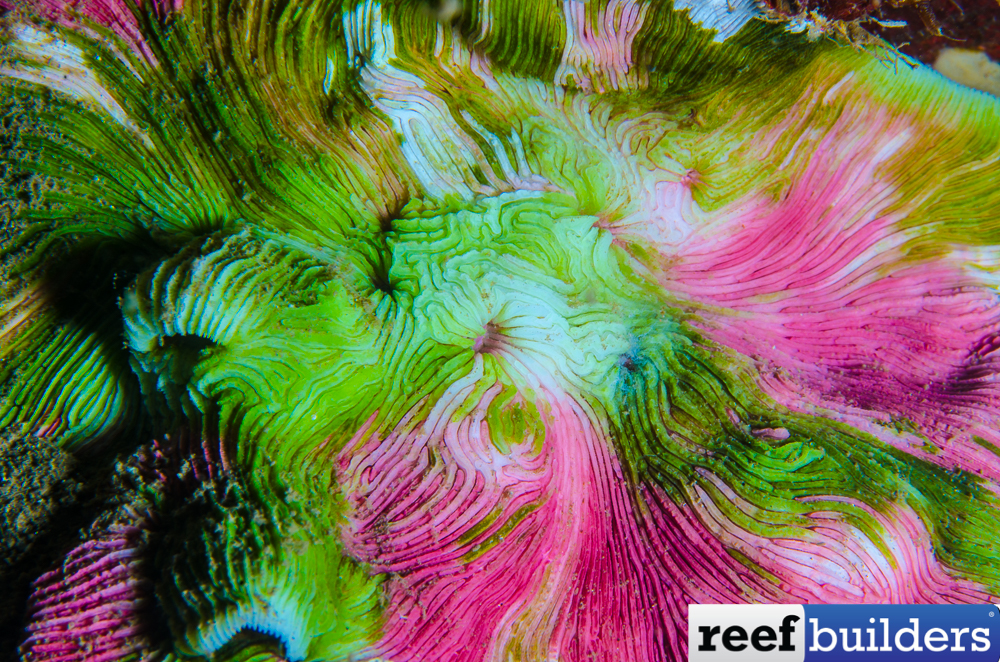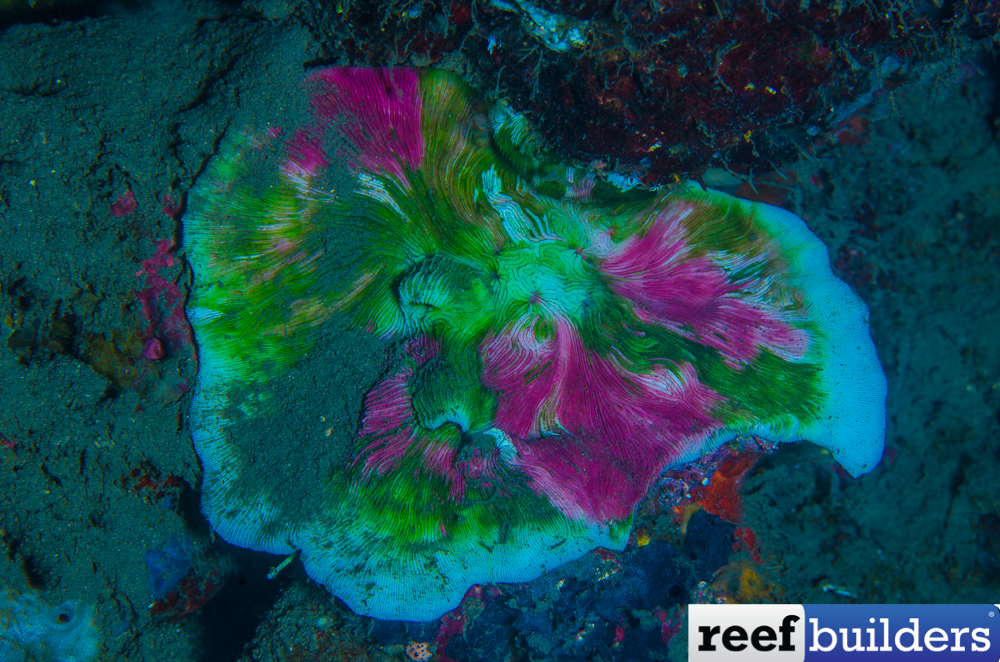On a recent dive on a deep reef in Indonesia, we noticed a very unique coral under a ledge. It was a very colorful specimen of Leptoseris foliosa with very unusual coloration unlike anything we’ve ever seen before. We had heard of cave dwelling Leptoseris, such as Leptoseris troglodyta that can survive in total darkness but hadn’t observed this in other species before.
The particular specimen we found was very colorful compared to these L. troglodytha. Living under a ledge in a turbid protected bay, around 75 feet (25m) deep it was exposed to a very small amount of light..But it’s the colorful endolithic algae that this coral is harboring that make it absolutely fascinating.

Although there are usually no zooxanthellae in the soft tissue, it contains green and pink/red shade-adapted endolithic cyanobacteria embedded in the skeleton, which have also been
reported from other species of Leptoseris. Enzymatic activity of carbonic anhydrase and catalase, as well as photosynthetic adaptations to low light level and low metabolic activity rates, enable the algae to grow in this unique habitat. They are considered skiophilous (shade-loving) or cavernicolous, i.e., living in caves.

Coral tissues and skeleton filter 93.98-99.5% of the ambient UV radiation and thus shade the endolithic algae from this potentially damaging radiation. Also the light amplifying mechanisms of the host improve photosynthesis of the symbionts. Light of short wavelengths is absorbed by host pigments which transform short into longer wavelengths and the transformed light is more efficient for photosynthesis.
In addition endolithic algae are largely relieved from grazing pressure by herbivorous fish therefore the coral skeleton provides a refuge to the endolithic algae from some of the environmental pressures normally experienced by free-living algae on the reef. Some studies have suggested that the endolithic algae located within the skeleton of the coral may be aiding the survival of coral species by providing an alternative source of energy somewhat like zooxanthellae, but this would need to be confirmed.

Another remarkable feature is that the cave-dwelling Leptoseris possesses parallel ridges on the sides of their septa, which are called menianes which help zooxanthellate Leptoseris corals to absorb sunlight more efficiently at greater depths. It would be very interesting to try to maintain this coral in reef aquarium, in a very dark part of a reef tank. Its metabolism is probably very slow, and we suspect it growth to be ultra slow which makes it a very remarkable coral.



